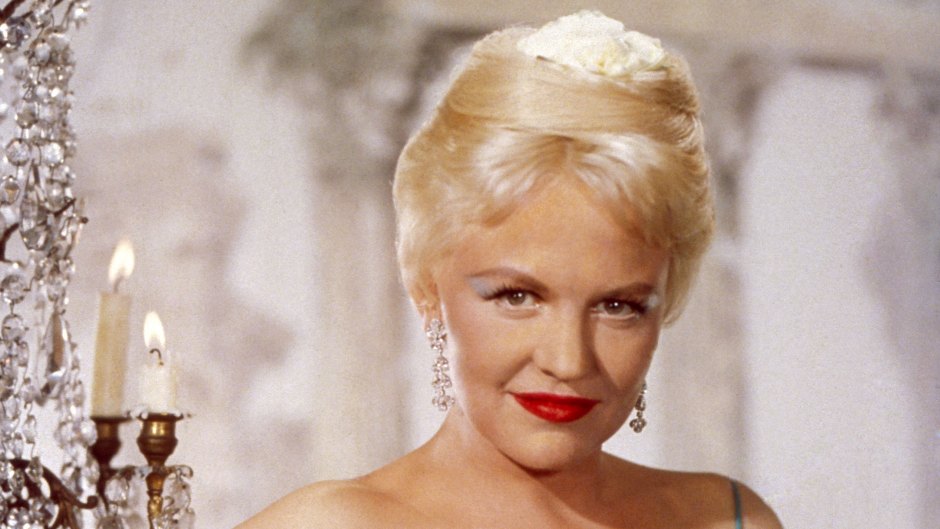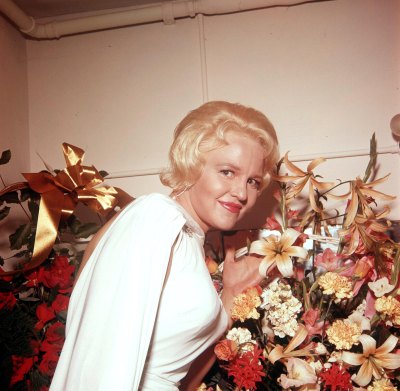
Moviestore/Shutterstock
Singer Peggy Lee’s ‘Basic Reason For Living’ Was Making People Happy Through Her Songs
A little over a decade before her death, Miss Peggy Lee played a series of club dates in New York. Though suffering from breathing issues and ill health, the singer known for hits like “Fever,” “Why Don’t You Do Right?” and “Is That All There Is?” drew an ecstatic response from an audience that included Liza Minnelli, k.d. lang and Madonna. “I found her to be a charming person,” Peggy said of the latter in 1991. “She expressed interest in playing me in the movie of my life.”
It didn’t happen for Madonna, but Oscar nominee Michelle Williams is currently in preproduction on a biopic about Peggy’s life and six decades in the spotlight. It’s long overdue! “Peggy’s an unsung heroine,” says Tish Oney, author of Peggy Lee: A Century of Song. “She was a universal woman — she could do a lot of things really, really well. She also did a lot for women and was an early advocate of songwriters’ rights.”
But best of all, Peggy Lee, who was born Norma Egstrom in Jamestown, N.D., could sing like a dream. “I had always sung, I sang before I could talk,” she shared in her 1989 memoir, Miss Peggy Lee. Music, a passion she inherited from her mother, who died when Peggy was 4, consoled her through an unhappy childhood. The sixth of seven children born to her hard-drinking father, Peggy was abused by her stepmother and started singing professionally at age 14 to earn money to escape home.
Big band leader Benny Goodman recognized her talent and hired Peggy, at 21, to be his new vocalist. She honed her soft, sultry singing voice at supper club shows. “She wanted the audience’s attention,” says Oney. “She discovered that the softer she sang, the quieter the room got.”

After becoming a star in Goodman’s band, Peggy never knew anything but professional success. During her long career, she would release 59 albums and write lyrics for hundreds of the 700 songs she recorded. In 1995, the Grammys celebrated her work with a Lifetime Achievement Award.
Peggy triumphed on the big screen, too, making her acting debut in 1950. Five years later, her portrayal of an alcoholic blues singer in Pete Kelly’s Blues earned her an Oscar nomination.
Sadly, Peggy’s private life was a bit more troublesome. In 1943, she married Dave Barbour, a guitarist in Goodman’s band. The couple composed songs together and shared a daughter, Nicki, but his alcoholism doomed the marriage. “Peggy called him the love of her life,” says Oney of the singer, who had three other, short-lived marriages. “She believed they belonged together.”
As her health declined in her last decade, Peggy tried retiring several times, but the spotlight drew her back. “People tell me how my songs helped them through dark periods. That is extremely gratifying,” she said before her 2002 passing. “It’s my basic reason for living, my little contribution to the hope and happiness of people.”






































